 | TODAY IN SCIENCE HISTORY
NEWSLETTER - 21 SEPTEMBER |
 On 21 Sep 1936, Frank Hornby died, the English toy manufacturer who invented the Meccano construction toy with its familiar perforated metal strips in 1901 (copied by Erector Set). He introduced Hornby model trains in 1920 and the Dinky range of model cars from 1933. Today's Science Store pick is: The Toy Story: The Life and Times of Inventor Frank Hornby, by Anthony McReavy who shows Hornby as a passionate and inspired man, responsible for the toys which shaped generations of children. The author's story also encompassed social history, politics and changing attitudes towards children in this beautifully written life story of an unsung hero. It is available New from $179.76. Used from $11.70. (As of time of writing.). On 21 Sep 1936, Frank Hornby died, the English toy manufacturer who invented the Meccano construction toy with its familiar perforated metal strips in 1901 (copied by Erector Set). He introduced Hornby model trains in 1920 and the Dinky range of model cars from 1933. Today's Science Store pick is: The Toy Story: The Life and Times of Inventor Frank Hornby, by Anthony McReavy who shows Hornby as a passionate and inspired man, responsible for the toys which shaped generations of children. The author's story also encompassed social history, politics and changing attitudes towards children in this beautifully written life story of an unsung hero. It is available New from $179.76. Used from $11.70. (As of time of writing.).
For picks from earlier newsletters, see the Today in Science Science Store home page.
| |
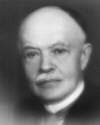 | The native hospital in Tunis was the focal point of my research. Often, when going to the hospital, I had to step over the bodies of typhus patients who were awaiting admission to the hospital and had fallen exhausted at the door. We had observed a certain phenomenon at the hospital, of which no one recognized the significance, and which drew my attention. In those days typhus patients were accommodated in the open medical wards. Before reaching the door of the wards they spread contagion. They transmitted the disease to the families that sheltered them, and doctors visiting them were also infected. The administrative staff admitting the patients, the personnel responsible for taking their clothes and linen, and the laundry staff were also contaminated. In spite of this, once admitted to the general ward the typhus patient did not contaminate any of the other patients, the nurses or the doctors. I took this observation as my guide. I asked myself what happened between the entrance to the hospital and the wards. This is what happened: the typhus patient was stripped of his clothes and linen, shaved and washed. The contagious agent was therefore something attached to his skin and clothing, something which soap and water could remove. It could only be the louse. It was the louse. - Charles-Jules-Henri Nicolle, French physician and bacteriologist (born 21 Sep 1866).  |
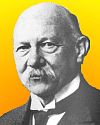 | According to my views, aiming at quantitative investigations, that is at establishing relations between measurements of phenomena, should take first place in the experimental practice of physics. By measurement to knowledge [door meten tot weten] I should like to write as a motto above the entrance to every physics laboratory. - Heike Kamerlingh Onnes, Dutch physicist (born 21 Sep 1853).  |
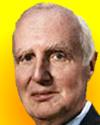 | I suspect that the most important effect of World War II on physical science lay in the change in the attitude of people to science. The politicians and the public were convinced that science was useful and were in no position to argue about the details. A professor of physics might be more sinister than he was in the 1930s, but he was no longer an old fool with a beard in a comic-strip. The scientists or at any rate the physicists, had changed their attitude. They not only believed in the interest of science for themselves, they had acquired also a belief that the tax-payer should and would pay for it and would, in some unspecified length of run, benefit by it. - Sir Edward Bullard, English geophysicist (born 21 Sep 1907).  |
| Before you look at today's web page, see if you can answer some of these questions about the events that happened on this day. Some of the names are very familiar. Others will likely stump you. Tickle your curiosity with these questions, then check your answers on today's web page. |
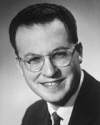 | Donald A. Glaser, born 21 Sep 1926, was an American physicist, winner of the Nobel Prize for Physics in 1960 for his invention, used to observe the behaviour of subatomic particles.
 What was this scientist's invention? |
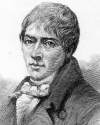 | John McAdam, born 21 Sep 1756, was a Scottish inventor who developed new methods of road construction.
 Can you give one, two, or perhaps three, eponyms for his inventions (words formed from this scientist's name)? |
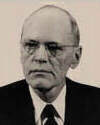 | Earle Dickson (1892-1961) found his wife prone to kitchen accidents such as cuts or burns, and he frequently was dressing her small wounds with cotton gauze and adhesive tape.
 He devised a new dressing. How did this lead to a now familiar product? |
| On 21 Sep of a certain year, the Duryea Motor Wagon Company became the first auto manufacturer to open in the U.S. The Duryea brothers had built the first automobile two years earlier, a horseless carriage, believed to be the first gasoline-powered automobile built in the United States.
 In what decade did their company open? |
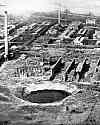 | On 21 Sep 1921, a huge explosion at a factory at Oppau, Germany, caused 500 deaths and destruction of hundreds of neighboring houses. The crater was 250-ft diam. and 50-ft deep.
 What caused this explosion? |
When you have your answers ready to all the questions above, you'll find all the information to check them, and more, on the September 21 web page of Today in Science History. Or, try this link first for just the brief answers.
Fast answers for the previous newsletter for September 20: table salt • Thermos • mumps • uranium • decade containing the year 1954 • elevator with safety fall-arrest device. |
 If you enjoy this newsletter, the website, or wish to offer encouragement or ideas, please send feedback by using your mail reader Reply button. If you enjoy this newsletter, the website, or wish to offer encouragement or ideas, please send feedback by using your mail reader Reply button.
Your click on a StumbleUpon, Google+ or Facebook social button on the site webpages is also a welcome sign of appreciation. Thank you for using them. |
To find citations for quotations go to the corresponding webpage by clicking on the “quotes” balloon icon. Sources for the thumbnails appear on today's webpage with the corresponding item.
� This newsletter is copyright 2013 by todayinsci.com. Please respect the Webmaster's wishes and do not put copies online of the Newsletter � or any Today in Science History webpage. (If you already have done so, please remove them. Thank you.) Offline use in education is encouraged such as a printout on a bulletin board, or projected for classroom viewing. Online, descriptive links to our pages are welcomed, as these will provide a reader with the most recent revisions, additions and/or corrections of a webpage. For any other copyright questions, please contact the Webmaster by using your mail reader Reply button. |
--
If you do not want to receive any more newsletters,
Unsubscribe To update your preferences and to unsubscribe visit
this link 






 What was this scientist's invention?
What was this scientist's invention? 
 Can you give one, two, or perhaps three, eponyms for his inventions (words formed from this scientist's name)?
Can you give one, two, or perhaps three, eponyms for his inventions (words formed from this scientist's name)? 
 He devised a new dressing. How did this lead to a now familiar product?
He devised a new dressing. How did this lead to a now familiar product?  In what decade did their company open?
In what decade did their company open? 
 What caused this explosion?
What caused this explosion?  If you enjoy this newsletter, the website, or wish to offer encouragement or ideas, please send feedback by using your mail reader Reply button.
If you enjoy this newsletter, the website, or wish to offer encouragement or ideas, please send feedback by using your mail reader Reply button. 

Δεν υπάρχουν σχόλια:
Δημοσίευση σχολίου